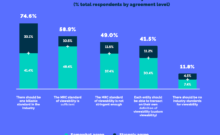I’ve always had a hunch about online advertising, particularly substantiated by Facebook, that most of the “clicks” — what you are directly charged for — are largely made up of fake people, bots or otherwise irrelevant profiles. Why have I had a hunch about this? Well, I understand conversion rates.
Most of my website’s converting traffic tells a tale of anywhere from a 1 to 3% overall conversion rate — standard for my industry. While my advertisements, which lead these “targeted” profiles to the same website, have a drop off much closer to a 0% conversion rate. More often than not, out of approximately 2,000 clicks, only one or two will fill out a form on my website or call my company and let us know that they saw us on one of these advertising campaigns we’re running.
With so much news about investigations into Facebook’s advertising practices, and the recent announcement that Facebook deleted approximately 585 million fake accounts, my hunch feels plausible — even justified, in my mind. I know that this is a slippery-slope argument, but various types of digital ad fraud should be a concern for many marketers and business owners. Learning how to circumvent instances of fraud is important.
According to a 2017 digital ad fraud report by the Association of National Advertisers (ANA), “Traffic sourcing is still the top way bots make money.” Furthermore, fraud is estimated to account for 9% of digital display spend and 22% of video spend.
Read More at The Original Article: www.forbes.com









